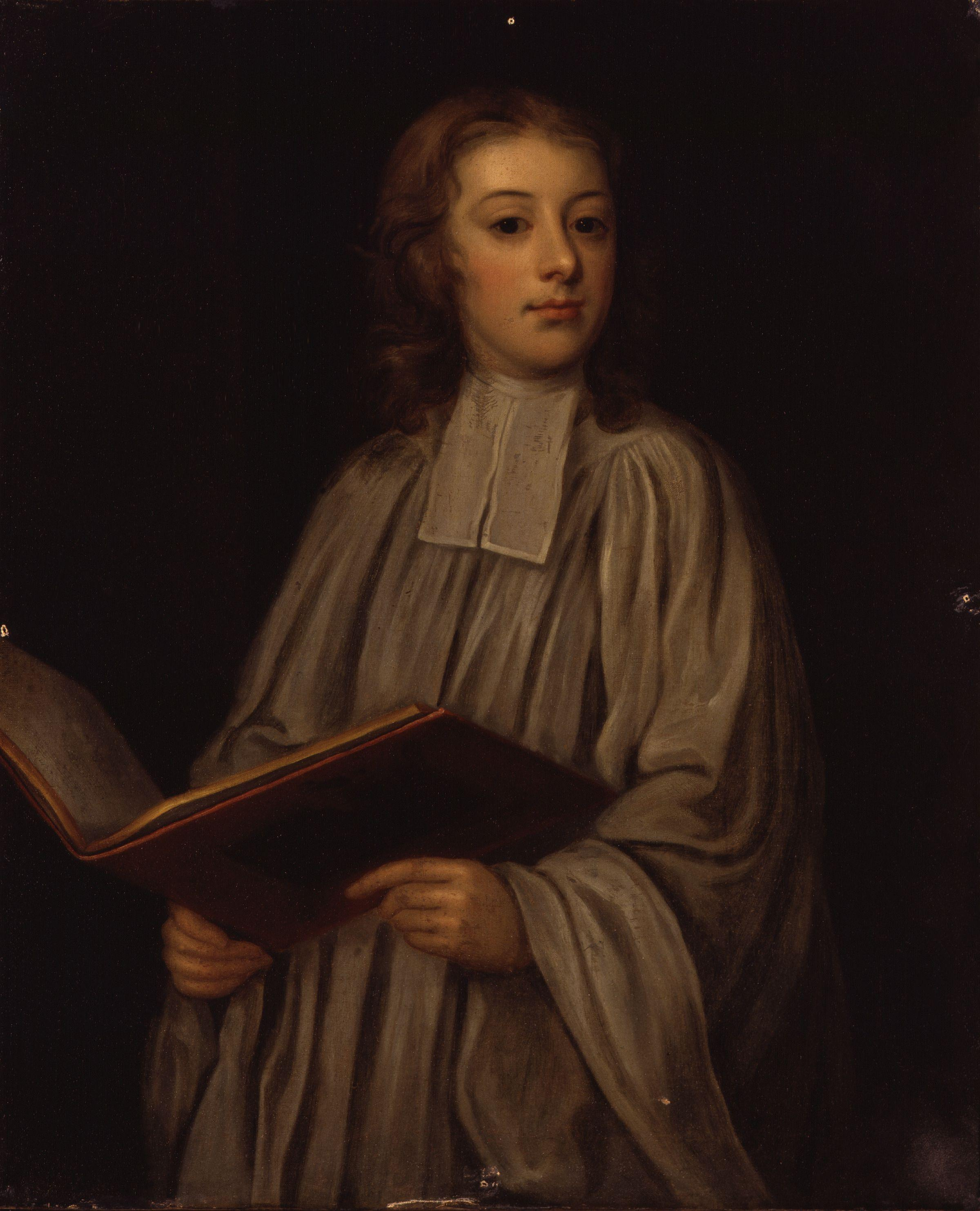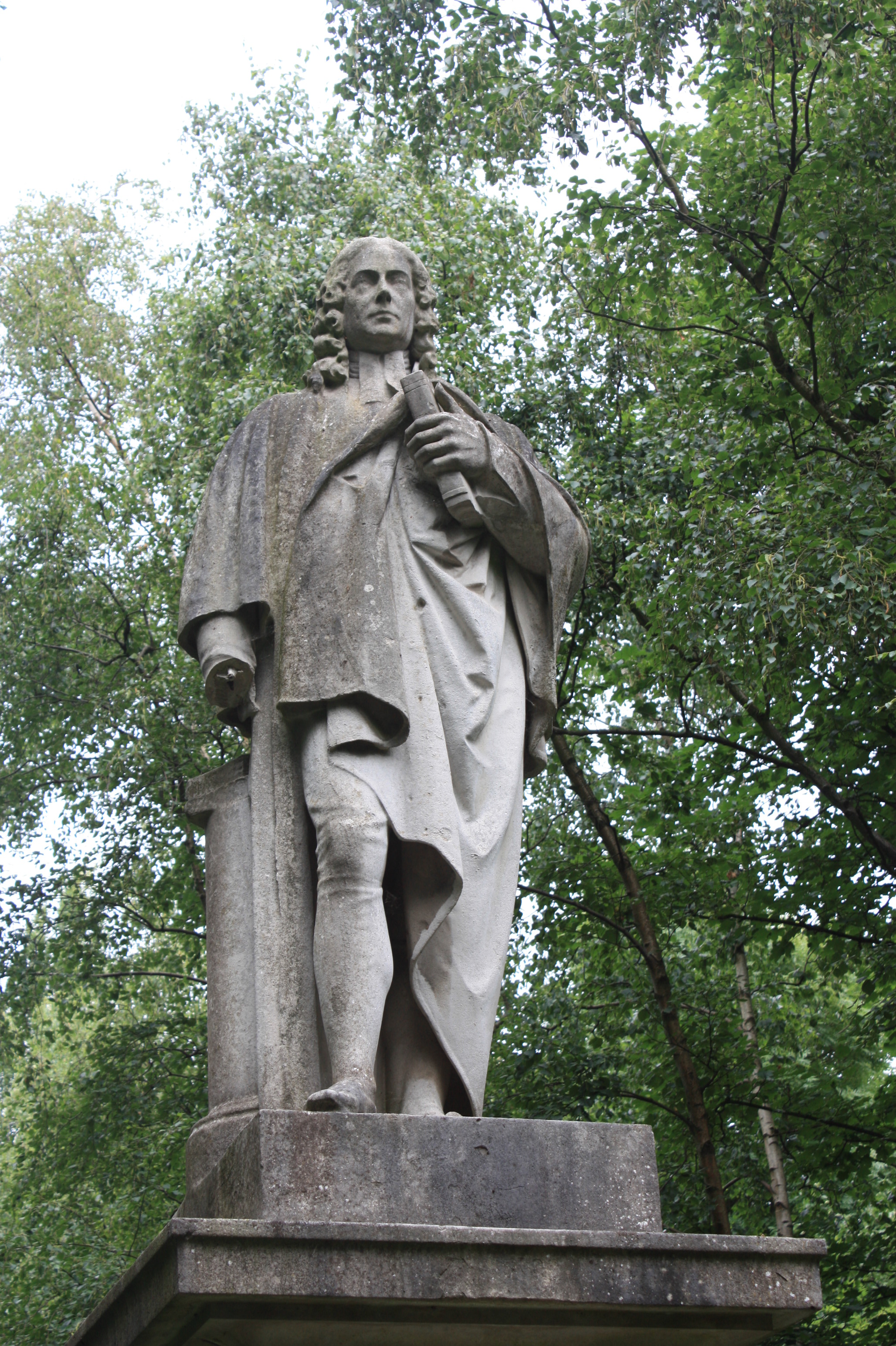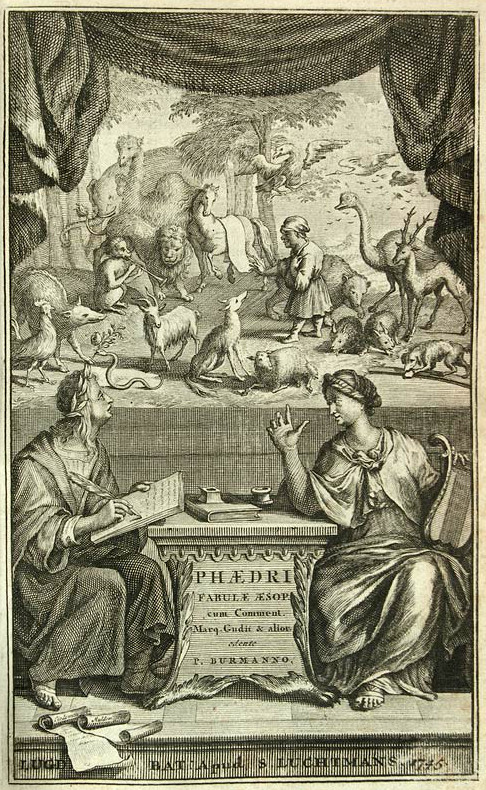|
Iambic Trimeter
The Iambic trimeter is a meter of poetry consisting of three iambic units (each of two feet) per line. In ancient Greek poetry and Latin poetry, an iambic trimeter is a quantitative meter, in which a line consists of three iambic ''metra''. Each ''metron'' consists of the pattern , x – u – , , where "–" represents a long syllable, "u" a short one, and "x" an ''anceps'' (either long or short). Resolution was common, especially in the first two metra of the line, so that any long or ''anceps'' syllable except the last could be replaced by two short syllables (see for example Euripides#Chronology), making a total of 13 or more syllables. It is the most common meter used for the spoken parts (as opposed to the sung parts) of Ancient Greek tragedy, comedy, and satyr plays. It is also common in iambus or 'blame poetry', although it is not the only meter for that genre. In the accentual-syllabic verse of English, German, and other languages, however, the iambic trimeter is a m ... [...More Info...] [...Related Items...] OR: [Wikipedia] [Google] [Baidu] |
Meter (poetry)
In poetry, metre ( Commonwealth spelling) or meter (American spelling; see American and British English spelling differences#-re, -er, spelling differences) is the basic rhythm, rhythmic structure of a verse (poetry), verse or Line (poetry), lines in verse. Many traditional verse forms prescribe a specific verse metre, or a certain set of metres alternating in a particular order. The study and the actual use of metres and forms of versification are both known as prosody. (Within linguistics, "Prosody (linguistics), prosody" is used in a more general sense that includes not only poetic metre but also the rhythmic aspects of prose, whether formal or informal, that vary from language to language, and sometimes between poetic traditions.) Characteristics An assortment of features can be identified when classifying poetry and its metre. Qualitative versus quantitative metre The metre of most poetry of the Western world and elsewhere is based on patterns of syllables of particular typ ... [...More Info...] [...Related Items...] OR: [Wikipedia] [Google] [Baidu] |
Brevis In Longo
In Greek and Latin metre, ''brevis in longo'' (; ) is a short syllable at the end of a line that is counted as long. The term is short for , meaning "a short yllablein place of a long lement" Although the phenomenon itself has been known since ancient times, the phrase is saidcf. West, M. L."Three Topics in Greek Metre" ''The Classical Quarterly'', Vol. 32, No. 2 (1982), pp. 281-297; p. 288. to have been invented by the classical scholar Paul Maas. ''Brevis in longo'' is possible in various classical metres that require a long syllable at the end of a line, including dactylic hexameters and iambic trimeters. It can also be found in the centre of a line in some metres, before a dieresis (e.g. in the iambic octonarius). However, it does not seem to be found in every metre. For example, in Greek, in ionic metres ending in u u – –, there do not seem to be any examples. A similar phenomenon is found in other languages whose poetic metres are quantitative, such as Arabic, Persi ... [...More Info...] [...Related Items...] OR: [Wikipedia] [Google] [Baidu] |
Our God, Our Help In Ages Past
"Our God, Our Help in Ages Past" is a hymn by Isaac Watts in 1708 that paraphrases the 90th Psalm of the Book of Psalms. It originally consisted of nine stanzas; however, in present usage the fourth, sixth, and eighth stanzas are commonly omitted to leave a total of six (Methodist books also include the original sixth stanza to leave a total of seven). In 1738, John Wesley in his hymnal, ''Psalms and Hymns'', changed the first line of the text from "Our God" to "O God". Both Watts' original text and Wesley's rewording remain in current use. History The hymn was originally part of ''The Psalms of David Imitated in the Language of the New Testament'', published by Watts in 1719. In this book he paraphrased in Christian verse the entire psalter with the exception of twelve Psalms which he felt were unsuited for Christian usage. The hymn is often sung as part of the remembrance day service in Canada and on similar occasions in the United Kingdom, including at the annual Remembran ... [...More Info...] [...Related Items...] OR: [Wikipedia] [Google] [Baidu] |
Isaac Watts
Isaac Watts (17 July 1674 – 25 November 1748) was an English Congregational minister, hymn writer, theologian, and logician. He was a prolific and popular hymn writer and is credited with some 750 hymns. His works include "When I Survey the Wondrous Cross", "Joy to the World", and "Our God, Our Help in Ages Past". He is recognized as the "Godfather of English Hymnody"; many of his hymns remain in use today and have been translated into numerous languages. Life Watts was born in Southampton, Hampshire, England, in 1674 and was brought up in the home of a committed religious nonconformist; his father, also Isaac Watts, had been incarcerated twice for his views. Watts had a classical education at King Edward VI School, Southampton, learning Latin, Greek, and Hebrew. Watts displayed a propensity for rhyme from an early age. He was once asked why he had his eyes open during prayers, to which he responded: He received corporal punishment for this, to which he cried: Watts co ... [...More Info...] [...Related Items...] OR: [Wikipedia] [Google] [Baidu] |
Iambic Tetrameter
Iambic tetrameter is a poetic meter in ancient Greek and Latin poetry; as the name of ''a rhythm'', iambic tetrameter consists of four metra, each metron being of the form , x – u – , , consisting of a spondee and an iamb, or two iambs. There usually is a break in the centre of the line, thus the whole line is: , x – u – , x – u – , , x – u – , , x – u – , ("x" is a syllable that can be long or short, "–" is a long syllable, and "u" is a short one.) In modern English poetry, it refers to a line consisting of four iambic feet. The word "tetrameter" simply means that there are four feet in the line; ''iambic tetrameter'' is a line comprising four iambs, defined by accent. The scheme is thus: x / x / x / x / Some poetic forms rely upon the iambic tetrameter, for example triolet, Onegin stanza, In Memoriam stanza, long measure (or long meter) ballad stanza. Quantitative verse In Medieval Latin The term iambic tetrameter originally appl ... [...More Info...] [...Related Items...] OR: [Wikipedia] [Google] [Baidu] |
Common Meter
Common metre or common measure—abbreviated as C. M. or CM—is a poetic metre consisting of four lines that alternate between iambic tetrameter (four metrical feet per line) and iambic trimeter (three metrical feet per line), with each foot consisting of an unstressed syllable followed by a stressed syllable. The metre is denoted by the syllable count of each line, i.e. 8.6.8.6, 86.86, or 86 86, depending on style, or by its shorthand abbreviation "CM". Common metre has been used for ballads such as "Tam Lin" and hymns such as "Amazing Grace" and the Christmas carol "O Little Town of Bethlehem". The upshot of this commonality is that lyrics of one song can be sung to the tune of another; for example, "Advance Australia Fair", "House of the Rising Sun", Pokémon Theme and "Amazing Grace" can have their lyrics set to the tune of any of the others. Historically, lyrics were not always wedded to tunes and would therefore be sung to any fitting melody; "Amazing Grace", for instance, w ... [...More Info...] [...Related Items...] OR: [Wikipedia] [Google] [Baidu] |
William Blake
William Blake (28 November 1757 – 12 August 1827) was an English poet, painter, and printmaker. Largely unrecognised during his life, Blake is now considered a seminal figure in the history of the poetry and visual art of the Romantic Age. What he called his " prophetic works" were said by 20th-century critic Northrop Frye to form "what is in proportion to its merits the least read body of poetry in the English language". His visual artistry led 21st-century critic Jonathan Jones to proclaim him "far and away the greatest artist Britain has ever produced". In 2002, Blake was placed at number 38 in the BBC's poll of the 100 Greatest Britons. While he lived in London his entire life, except for three years spent in Felpham, he produced a diverse and symbolically rich collection of works, which embraced the imagination as "the body of God" or "human existence itself". Although Blake was considered mad by contemporaries for his idiosyncratic views, he is held in high regard b ... [...More Info...] [...Related Items...] OR: [Wikipedia] [Google] [Baidu] |
Theodore Roethke
Theodore Huebner Roethke ( ; May 25, 1908 – August 1, 1963) was an American poet. He is regarded as one of the most accomplished and influential poets of his generation, having won the Pulitzer Prize for poetry in 1954 for his book ''The Waking'', and the annual National Book Award for Poetry on two occasions: in 1959 for ''Words for the Wind'',"National Book Awards – 1959" . With acceptance speech by Poetry award panelist Daniel G. Hoffman and essay by Scott Challener from the Awards 60-year anniversary blog. Retrieved 2012-03-02. ... [...More Info...] [...Related Items...] OR: [Wikipedia] [Google] [Baidu] |
Metrical Foot
The foot is the basic repeating metre (poetry), rhythmic unit that forms part of a line of poetry, verse in most Indo-European languages, Indo-European traditions of poetry, including English accentual-syllabic verse and the quantitative meter of classics, classical ancient Greek poetry, ancient Greek and Latin poetry. The unit is composed of syllables, and is usually two, three, or four syllables in length. The most common feet in English are the Iamb (foot), iamb, trochee, dactyl (poetry), dactyl, and anapest. The foot might be compared to a Bar (music), bar, or a beat (music), beat divided into pulse groups, in musical notation. The English word "foot" is a translation of the Latin term ''pes'', plural ''pedes'', which in turn is a translation of the Ancient Greek ποῦς, pl. πόδες. The Ancient Greek prosodists, who invented this terminology, specified that a foot must have both an arsis and thesis, arsis and a thesis, that is, a place where the foot was raised ("arsis") ... [...More Info...] [...Related Items...] OR: [Wikipedia] [Google] [Baidu] |
Phaedrus (fabulist)
Gaius Julius Phaedrus (; grc-gre, Φαῖδρος; Phaîdros) was a 1st-century CE Roman Empire, Roman fabulist and the first versifier of a collection of Aesop's fables into Latin. Few facts are known about him for certain and there was little mention of his work during late antiquity. It was not until the discovery of a few imperfect manuscripts during and following the Renaissance that his importance emerged, both as an author and in the transmission of the fables. Biography A recent statement of the few facts that past scholars have tried to deduce from autobiographical hints given by Phaedrus in his poems has summarised them as follows: He was born in Macedonia, probably in Pydna, about 15 BCE, came to Rome as a slave and was freed by Augustus. He probably had some teaching function between then and the time of Tiberius, under whom the first book of his poems appeared. Envious competitors interpreted the morals of some fables as being critical of the regime and he was trie ... [...More Info...] [...Related Items...] OR: [Wikipedia] [Google] [Baidu] |
Terence
Publius Terentius Afer (; – ), better known in English as Terence (), was a Roman African playwright during the Roman Republic. His comedies were performed for the first time around 166–160 BC. Terentius Lucanus, a Roman senator, brought Terence to Rome as a slave, educated him and later on, impressed by his abilities, freed him. It is thought that Terence abruptly died, around the age of 25, likely in Greece or on his way back to Rome, due to shipwreck or disease. DEAD LINK He was supposedly on his way to explore and find inspiration for his comedies. His plays were heavily used to learn to speak and write in Latin during the Middle Ages and Renaissance Period, and in some instances were imitated by William Shakespeare. One famous quotation by Terence reads: "''Homo sum, humani nihil a me alienum puto''", or "I am human, and I think nothing human is alien to me." This appeared in his play ''Heauton Timorumenos''. Biography Terence's date of birth is disputed; Aelius ... [...More Info...] [...Related Items...] OR: [Wikipedia] [Google] [Baidu] |
Plautus
Titus Maccius Plautus (; c. 254 – 184 BC), commonly known as Plautus, was a Roman playwright of the Old Latin period. His comedies are the earliest Latin literary works to have survived in their entirety. He wrote Palliata comoedia, the genre devised by the innovator of Latin literature, Livius Andronicus. The word Plautine refers to both Plautus's own works and works similar to or influenced by his. Biography Not much is known about Titus Maccius Plautus's early life. It is believed that he was born in Sarsina, a small town in Emilia Romagna in northern Italy, around 254 BC.''The Concise Oxford Companion to Classical Literature'' (1996) Ed. M.C. Howatson and Ian Chilvers, Oxford University Press, Oxford Reference Online According to Morris Marples, Plautus worked as a stage-carpenter or scene-shifter in his early years. It is from this work, perhaps, that his love of the theater originated. His acting talent was eventually discovered; and he adopted the names "Maccius" (a ... [...More Info...] [...Related Items...] OR: [Wikipedia] [Google] [Baidu] |




